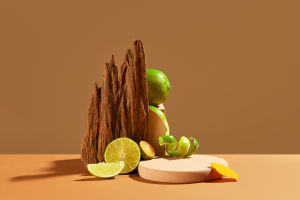When we walk through the produce section, we see a palette of vegetables—dark leafy greens, pale cucumbers, vibrant carrots. But have you ever asked yourself: Are darker vegetables always healthier? Or do lighter ones have their own strengths too?
Let's take a closer look together and uncover the truth behind vegetable colors and nutrition.
Why Does Color Matter in Vegetables?
Color in vegetables often comes from natural plant compounds called phytonutrients. These compounds not only give veggies their beautiful hues but also offer unique health benefits. For example, deep green vegetables often contain chlorophyll and folate, while orange or red veggies are rich in beta-carotene. Lighter-colored vegetables, on the other hand, may be lower in pigments but can still provide valuable nutrients like potassium, fiber, and vitamin C. So, color is more than just looks—it tells us something about what's inside.
Dark-Colored Vegetables: Small Size, Big Benefits
Let's start with the stars of the dark veggie world—spinach, kale, broccoli, Swiss chard, and red cabbage. These vegetables are rich in vitamins like A, C, E, and K, and minerals such as iron and calcium. What makes them even more powerful is the presence of antioxidants like lutein, zeaxanthin, and anthocyanins (found in purple or red vegetables). According to a study published by the USDA, dark green vegetables offer one of the highest nutrient densities per calorie, making them excellent for boosting overall health.
We especially love how dark greens support eye health, immune function, and even brain clarity. Plus, they're versatile—you can eat them raw in salads, sautéed, or blended into smoothies.
Light-Colored Vegetables: Gentle but Important
Now, don't count out the lighter veggies just yet. Think of cauliflower, cucumbers, white mushrooms, Cabbage, and zucchini. These may not be as bold in color, but they're often high in water content, making them great for hydration and digestion. They're also rich in potassium, vitamin C, and fiber, which help regulate blood pressure and support gut health.
Cauliflower, for example, contains glucosinolates, which are known to support detoxification. Cucumbers provide antioxidants like flavonoids and tannins, and white mushrooms are a surprising source of vitamin D when exposed to sunlight. We often turn to light-colored vegetables for lighter meals or as refreshing snacks.
Should We Always Choose Dark Over Light?
The short answer? No. While darker vegetables tend to have higher levels of certain nutrients, lighter ones bring balance to our diet. Each color group has something special to offer, and variety is key. Nutrition experts like Dr. Walter Willett, professor of nutrition at Harvard T.H. Chan School of Public Health, recommend including a wide range of colorful vegetables daily to maximize health benefits.
For example, we can mix kale (dark green) with zucchini (light green) in a stir-fry, or combine red cabbage and cucumber in a fresh salad. This way, we get the best of both worlds—fiber, antioxidants, hydration, and essential vitamins—all in one meal.
Tips to Boost Nutrition from Any Vegetable
Here are a few simple tricks we use to get the most out of our veggies, whether dark or light:
• Don't overcook: Steaming or roasting helps preserve nutrients.
• Add healthy fats: A little olive oil helps our bodies absorb fat-soluble vitamins (A, D, E, and K).
• Eat the skins: For veggies like cucumbers and zucchini, the skins contain extra fiber and antioxidants.
• Combine colors: The more variety on your plate, the more likely you're covering your nutritional needs.
Let's Build a Colorful Plate Together!
At the end of the day, it's not a battle between dark and light—it's a team effort. We encourage you to fill your meals with vegetables of all shades, because each one brings something unique to the table. The key is to eat a variety, cook them in healthy ways, and enjoy the process.
So, what's your favorite vegetable color combo? Have you ever noticed how your body feels after a meal filled with fresh greens, reds, and whites? Share your thoughts with us—we'd love to hear how you bring color and nutrition into your meals!


